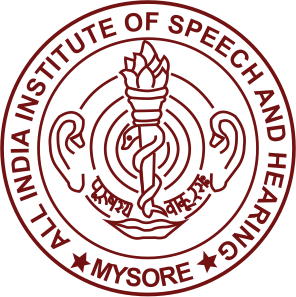| DC Field | Value | Language |
|---|
| dc.contributor.author | Stephen, Steby | - |
| dc.contributor.author | Sindhupriya, C | - |
| dc.contributor.author | Swapna, N | - |
| dc.date.accessioned | 2020-12-04T11:48:42Z | - |
| dc.date.available | 2020-12-04T11:48:42Z | - |
| dc.date.issued | 2010 | - |
| dc.identifier.issn | 0973-662X | - |
| dc.identifier.uri | http://203.129.241.91:8080//handle/123456789/2016 | - |
| dc.description.abstract | There has been much debate among researchers and educators on the effects of bilingualism on the young children. Literature hints that bilingual children have a cognitive advantage. However, studies to explore the effect of bilingualism on cognitive and linguistic abilities are limited. The main aim of the present study was to evaluate the performance of bilingual children on cognitive linguistic tasks. The participants in the study included 12 bilingual children and 12 monolingual children in the age range of 7-8 years. The Cognitive Linguistic Assessment Protocol for Children (CLAP-C) (Anuroopa & Shyamala, 2008) for children was administered on the selected participants. The CLAP-C assesses the performance of the children in three domains i.e. attention/ discrimination, memory and problem solving. The analyzed data was tabulated for each subject and subjected to appropriate statistical analysis. The results revealed that bilingual children were superior to monolingual children on all the cognitive- linguistic tasks, assessed in CLAP-C (attention/discrimination, memory and problem solving). Both the groups scored maximum in attention domain, followed by problem solving and then memory. The results of the present study revealed that bilingual children had a clear cognitive-linguistic advantage compared to monolingual children. The results firmly supported the claim that the bilingualism fosters the development of cognitive-linguistic functions in young children. Generalizing these results to the clinical population it is implicated that even children with communication disorders can be taught two or more languages, provided they have the potential to learn the languages. | en_US |
| dc.language.iso | en | en_US |
| dc.subject | Cognitive | en_US |
| dc.subject | Linguistic, | en_US |
| dc.subject | Bilingual | en_US |
| dc.subject | Children | en_US |
| dc.title | Cognitive-Linguistic Abilities in Bilingual Children | en_US |
| dc.type | Article | en_US |
| dc.journalname.journalname | Journal of All India institute of Speech and Hearing | en_US |
| dc.volumeno.volumeno | 29 | en_US |
| dc.issueno.issueno | 1 | en_US |
| dc.pages.pages | 1-11 | en_US |
| Appears in Resource: | Journal Articles
|

